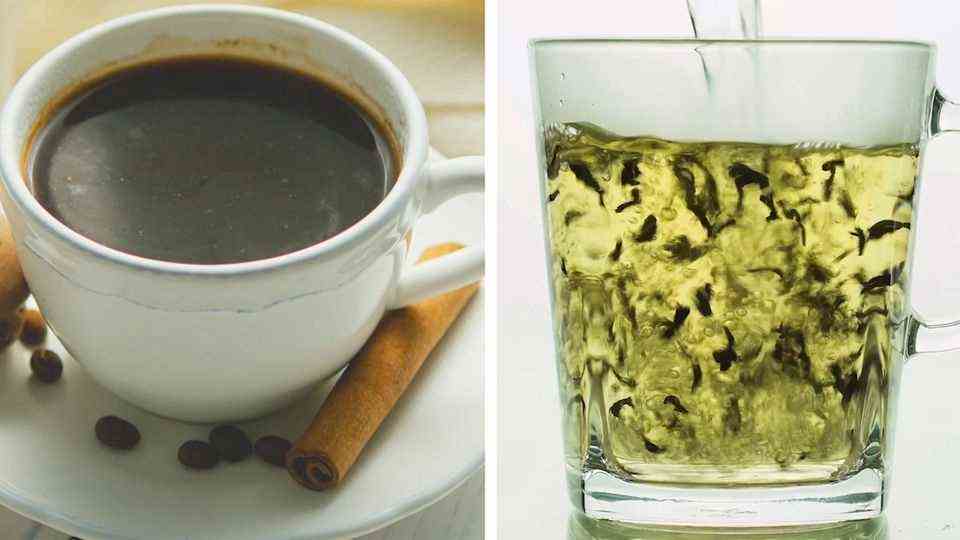Asian folk medicine
Fermented tea: recipe for homemade kombucha
Homemade kombucha tastes sweet and sour with a pleasantly fermented note in the background – a great alternative to lemonade and the like.
© RamilF / Getty Images
Kombucha is conquering Hollywood and social media. Stars, starlets and influencers swear by the fermented tea drink, which originated in Asian folk medicine. What’s behind the hype and how you can make Kombucha yourself.
Have you heard of kombucha? The tea drink with the sour taste is currently conquering social media and has become an integral part of trendy cafes, bars and organic supermarkets. But the drink with the unusual name is not that new. Some may remember a “Kombucha wave” in the 1980s and 90s, which rolled mainly through the USA. Even then it was very popular to make your own fermented drink. It is slowly establishing itself in this country as well. But what’s behind the hype?
From hippie tea to trendy drink
Kombucha is being celebrated widely on social media. It is said to have health-promoting effects. Regular consumption is said to make you feel more energetic, and the drink is said to support digestion and the immune system, relieve the liver and thus contribute to inner balance.
It is also often consumed as a natural alternative to coffee. Since the drink is based on green or black tea, it contains the active ingredient theine. In contrast to the caffeine in coffee, this is absorbed rather slowly and evenly. It doesn’t work as quickly, but the invigorating effect is gentler and lasts longer.
Last but not least, Kombucha scores with its taste. The soft drink tastes sweet and sour, tingles slightly on the tongue and is a little reminiscent of cider. The color and taste of the drink can vary due to the type of tea used for fermentation.
What is kombucha?
Kombucha is a fermented tea drink. Various types of tea are fermented with the help of a tea fungus. The tea fungus is a community of various microorganisms, bacteria and yeast – a kind of gelatinous mass – which is why the Kombucha culture is also known as SCOBY (“symbiotic culture of bacteria and yeast”) will. During fermentation, tea and sugar are metabolized into a refreshing drink. This should not only make the drink tasty, but also bring numerous health benefits. According to this, various vitamins, organic acids and important nutrients are produced during fermentation. During fermentation, the added sugar produces alcohol and acetic acid, lactic acid and gluconic acid. This makes kombucha taste sour.
Kombucha is primarily used as a carbonated alternative to lemonade or other soft drinks with a sweet and sour taste. The drink was originally part of Asian folk medicine and is mainly sold in health food stores and health food stores in this country. It can also be found in the food and beverage trade as a ready-to-drink drink.
Where does the fermented tea come from?
There are many myths and legends about the origin of kombucha. However, the drink has its origins in Asia – probably in East Asia, Japan or China.
The first legend, which comes from China, refers to the year 247 BC. as the year of origin of the fermented tea. Its enjoyment is said to have promised eternal life at the time. Another legend has it that kombucha was introduced by the Japanese samurai in the tenth century. Supposedly they tanked up with this strength for the next battle and are said to have worn the “miracle drink” on their hips. How much truth there is in the legends will probably never be finally clarified.
However, the fact is that kombucha has been an integral part of the diet of numerous people in Russia, Japan, China and India for a very long time. At the beginning of the 20th century, the drink is said to have reached Europe via Russia and the Balkans. Here it enjoyed a rather small fan community. Today, kombucha is considered an absolute trend drink and is celebrated in social media.
Healing effect
Kombucha is said to have healing properties. This should have a positive effect on the immune system, metabolism and blood count. Even with impure skin or cardiovascular problems, the fermented drink is said to be able to bring about a significant improvement – but none of these theses has been scientifically confirmed. Only a positive effect on digestion and intestines could be proven so far.
Like other fermented drinks, the microorganisms in kombucha can have a positive effect on the intestinal flora. The drink has a slightly laxative, antibacterial effect, which is due to the acetic and lactic acid content. Unlike homemade kombucha, industrially produced kombucha is pasteurized to preserve it. This kills the microorganisms in the fermentation drink and thus destroys the positive effect.
Recipe for homemade kombucha
ingredients
- 1 kombucha mushroom (available online or at health food stores)
- 100 milliliters of finished kombucha
- 90 grams of whole cane sugar
- 1 liter of filtered water
- 8 grams of green tea
- 1 large glass jar (1 liter)
- 1 breathable cloth
- 1 rubber

preparation
- Bring a liter of water to a boil in a large saucepan and add the green tea.
- Simmer gently for 12 to 15 minutes.
- Drain the tea. Add the sugar and stir until it has completely dissolved in the tea.
- Leave the tea mixed with sugar in a glass jar to cool down to at least 25 degrees room temperature.
- Add 100 milliliters of finished kombucha.
- Wash the kombucha mushroom and carefully place it in the jar. It is important here to first add the kombucha mushroom to the cooled liquid. Hot water would destroy the living bacteria, yeast and proteins.
- Cover the opening of the jar with an air-permeable cloth and fasten with a rubber band.
- Leave the kombucha to ferment for seven days.
- Carefully remove the kombucha fungus from the kombucha liquid and remove any tea residue with lukewarm water.
- The kombucha mushroom can be stored in bottled kombucha liquid (this acts as a new starter liquid) for the next fermentation.
- Optional: Filter the liquid through a very fine sieve to remove individual small kombucha pieces.
- Pour the liquid into a sealable glass jar and leave to ferment again at room temperature for about two days. Natural carbonic acid can also form here.
Note: The finished Kombucha drink can be kept for up to six months and should be stored in a cool, dark place. Bottling the kombucha does not automatically stop the fermentation process. Over time, the kombucha becomes a little more acidic and gets more natural carbonic acid.
Swell:consumer center
tea maker test: Click here for the tea maker comparison.



